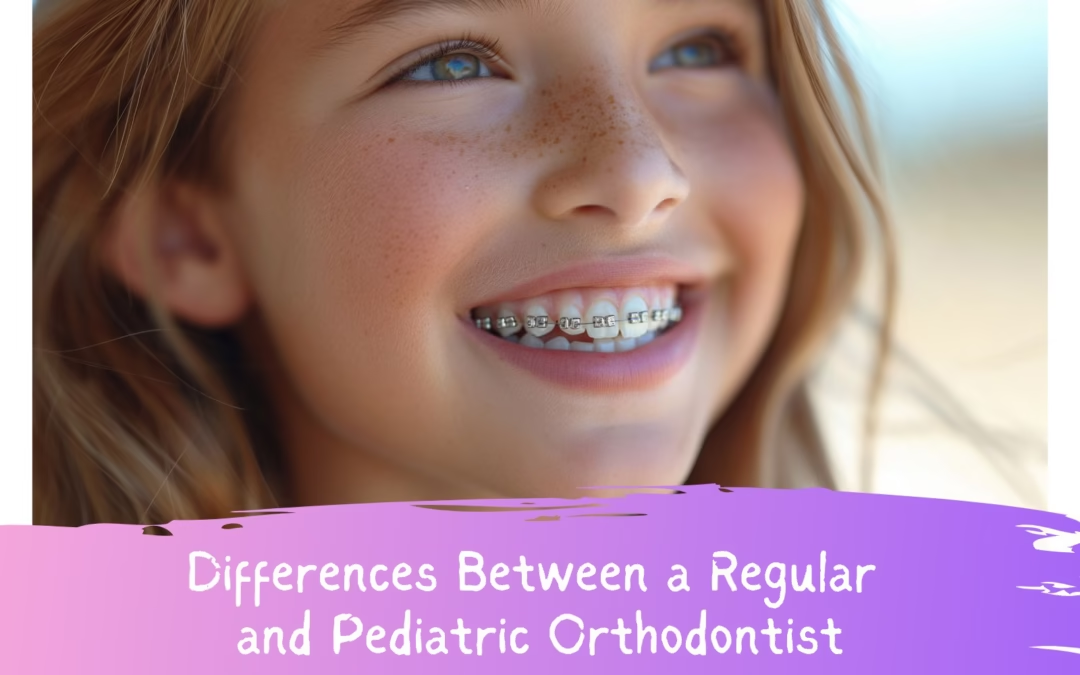Orthodontists are dental specialists who diagnose and correct misaligned teeth and bite problems. While all orthodontists complete the same advanced training after dental school, there is a distinction between a general orthodontist (who treats patients of all ages) and an orthodontist who specializes in children (sometimes called a pediatric orthodontist).
Education and Training
- Regular Orthodontist: Completes dental school plus 2–3 years of orthodontic residency. Trained to treat children, teens, and adults.
- Children’s Orthodontist: Has the same core training but focuses practice on pediatric patients. Some work closely with pediatric dentists and gain additional experience in child growth and development.
📖 According to the American Association of Orthodontists (AAO), orthodontists receive specialized education beyond dental school, focusing exclusively on aligning teeth and jaws.
Focus of Care
- General Orthodontist: Often begins treatment once permanent teeth have erupted (usually ages 11–14). Provides braces, aligners, and corrective appliances for all age groups.
- Pediatric Orthodontist: Emphasizes early evaluation (around age 7) and interceptive treatment. Uses growth-based approaches such as expanders or limited-phase braces to guide jaw and tooth development.
📌 The AAO specifically recommends that children have their first orthodontic check-up no later than age 7.
Patient Experience
- Regular Orthodontist: Office environment typically serves a mix of adults, teens, and children.
- Children’s Orthodontist: Offices are designed for younger patients, with child-friendly settings and staff trained in pediatric communication. Appointments are structured to reduce fear or anxiety in kids.
Summary: Key Difference
The difference between a regular orthodontist and one who specializes in children is primarily in focus and approach:
- A regular orthodontist is trained to treat patients of all ages and often begins full treatment in adolescence or adulthood.
- An orthodontist specializing in children emphasizes early evaluation, growth guidance, and a kid-friendly environment, aiming to prevent or minimize future orthodontic problems.
Both types are qualified specialists; the choice depends on the child’s age, developmental stage, and comfort level.
Frequently Asked Questions About Orthodontists for Children
A regular orthodontist is trained to treat patients of all ages, while a pediatric orthodontist focuses specifically on children. Pediatric orthodontists often emphasize early evaluation, growth guidance, and create a child-friendly environment.
Both regular orthodontists and pediatric orthodontists complete the same orthodontic residency. However, pediatric orthodontists usually gain additional experience with child growth and development, and many work closely with pediatric dentists.
The American Association of Orthodontists recommends that children have an orthodontic evaluation by age 7. Pediatric orthodontists can spot early bite or growth issues and may provide interceptive treatment to guide development.
Yes. All orthodontists are trained to treat children, teens, and adults. The difference is that pediatric orthodontists place more focus on children’s unique needs, growth stages, and comfort.
- Top 5 Partial Denture Questions, Answered by Chicago Dentist
- Caring for Your Partial Denture Through a Chicago Winter
- Don’t Let Them Disappear! Your 2025 Dental Benefits Are Expiring Soon.
- Finding Affordable Dentures in Chicago: A Guide to Quality Care Without the High Cost
- The Emotional Journey of Dentures: Rediscovering Your Confidence in Chicago
